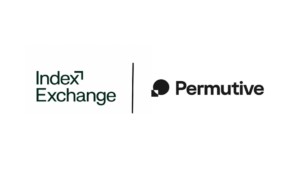Programmatic digital out-of-home (DOOH) isn’t a new concept, and has been available for a good few years now. However, it has not yet reached widespread adoption, and the extent to which some solutions have offered true automation can be questioned. Nonetheless, times are changing, and more industry stakeholders are waking up to the potential benefits that can be unlocked through automation in DOOH.
The second part (first part here) of our roundtable write-up, in association with Sage+Archer, takes a look at some of the challenges and benefits of bringing programmatic into DOOH and includes the thoughts of Ryan Rummery, Commercial DAX Director at Global; Alys Donnelly, Head of Programmatic at Kinetic; Paul Barnard, Managing Director at Regital; Kate Williams, Media Strategy Director at Jellyfish; Ben Wilkins, Product Director at Skyrise Intelligence; James Trott, Head of Strategy & Product at Matterkind; and Diederick Ubels, Co-founder and CEO at Sage+Archer.
As with any development, there are bound to be a few hurdles that have to be overcome, but the benefits and opportunities tend to outweigh those obstacles. The emergence of programmatic in DOOH is no different.
Up for the challenge
One of the biggest challenges when it comes to programmatic and DOOH is the fact that there are very few people who specialise in both, and there needs to be a way to bridge the gap between the programmatic specialists and the OOH specialists.
Regital’s Barnard said: “You’ve got two separate knowledge banks which are not that merged. You’ve got people who’ve been in out-of-home for a long time, and people who’ve been in programmatic for a long time. There’s not that many people across the divide. The out-of-home specialists may not know what the nuances are of buying programmatically, and vice versa. These nuances aren’t new, and we’re almost expecting to come up against them. But, when you do, you need to have knowledge of how these things work.”
A challenge that people from outside of OOH may not consider is the fact that, within the space, attention also has to be paid to the context of the frames you’re advertising on.
“In other areas of programmatic, we’ve never had to be concerned with the personal device that somebody is seeing the ad on. That’s not really the case with out-of-home. You really have to understand exactly the condition everything’s in, the environment, the direction the screen is facing, because that’s very much going to be attached to the brand,” according to Matterkind’s Trott.
“Also, in programmatic, we’ve always had blocklists and whitelists – and there’s a degree of that in the out-of-home space too. So, it’s the coming together of two worlds in our industry – specialist and programmatic – that will move us forward, and the speed in which this is happening seems to be a lot quicker than what’s happened previously.”
An additional element identified by Kinetic’s Donnelly is around the need to understand the capabilities of programmatic DOOH, and agencies and clients not expecting the medium to deliver in ways it has not been built to.
“We need to be aware of what channels do really well and how we can use them to the client’s best advantage,” Donnelly explained. “Out-of-home is inherently a broadcast channel. It’s one-to-many. With the strong advances being made in the programmatic space we can now target a selected few and deliver with greater flexibility, but it’s going to perform differently to display or social. That’s not a bad thing! We just need to make sure that we’re using the new opportunities we’ve got, and there are many new exciting options, in the right way to give the client the very best of both worlds.”
Donnelly also highlighted the issues with cross-channel measurement in the industry, pointing to the fact that there isn’t a piece of measurement “sophisticated enough” to give credit to the right channels. She said: “The media ecosystem isn’t really at a point where it can do that consistently in a way that everyone agrees with, and is fair to all channels.”
Keeping mobile
When it comes to measurement in programmatic OOH, mobile has a big role to play, particularly in a world that is moving from one-on-one measurement toward more cohort-level measurement, according to Sage+Archer’s Ubels.
“We see mobile playing a pivotal role in not just planning, but in measurement,” he commented. “We see a shift happening from one-to-one measurement to looking at measuring footfall through store insights and how they change on a cohort level. That’s a big KPI for location-driven campaigns to figure out.”
Ubels was also keen to underscore the role that mobile can play from a brand measurement point of view as well. He said: “We see tools that can not only measure the effect of out-of-home when there’s a big mass media everywhere campaign, but they can combine where and when ads have actually played with location data. We know from digital that we can measure who’s been exposed to that, and who hasn’t. That’s how we can measure reach.”
Skyrise’s business is built on aggregated mobile operator data, and Wilkins pointed to the opportunity these new datasets present, adding that when understood through the lens of time and location they’re capable of “targeting, measurement, and activating OOH as part of a truly joined up multi-channel campaign”.
He continued: “Traditional out-of-home can’t handle audience targeting like programmatic can. But equally, the datasets available to date haven’t been fresh or robust enough to realise its potential. Mobile operator data is different because it joins the digital and physical at scale, linking consumers based on what they read, buy and consume with how they move in the real world.”
Reaping the benefits
The ability of programmatic DOOH to work seamlessly alongside mobile isn’t the only benefit of automation within the space. In fact, there are quite a few.
“For me, it’s about the accessibility and innovation piece,” said Jellyfish’s Williams. “It’s innovating our media plans, and that’s ultimately what I’m going to continue to drive for. The opportunity with programmatic out-of-home is making it more accessible to do that. It’s not over-complicating things, and it’s forcing us to be more creative.
“All of that as a combination is what keeps the day-to-day exciting, and it’s what’s going to keep the clients coming to us saying, ‘what can we do now? What’s next? Where’s the innovation coming from?’ This is a perfect example of that, and what we want to be able to continue to put on a media plan.”
Global’s Rummery is equally positive about the opportunities presented by programmatic DOOH. He added: “Programmatic out-of-home is now becoming more established in the digital media mix, meaning buyers have complete access to all digital inventory via their DSP of choice. This opens up the market to new possibilities, new learnings and new advertisers, as well as complementing and enhancing the virtues of traditional outdoor.
“It’s a brand-safe environment as there is complete control over where and when an ad is displayed. Brands can reach audiences at scale and it’s data driven, so something to be embraced by everyone from brand marketers, media planners, specialists and programmatic experts.”












